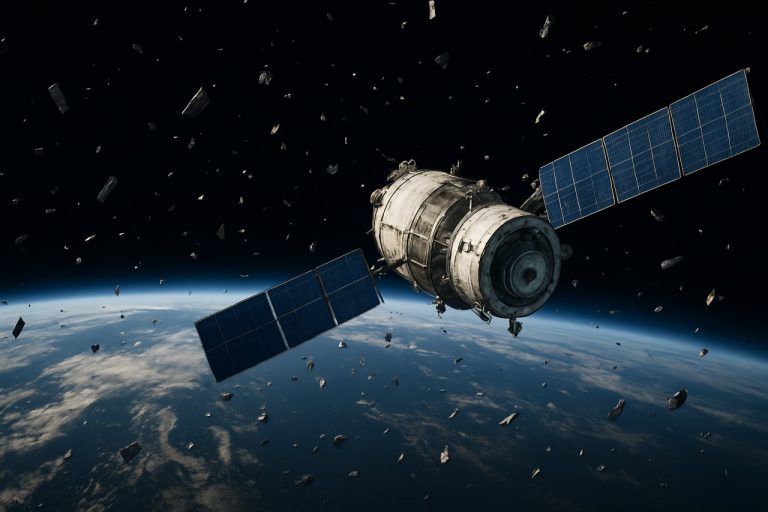
SpaceX Blasts SiriusXM’s SXM-10 Satellite Into Orbit—See How This Dazzling Nighttime Launch Is Revolutionizing Broadcasting
SpaceX’s Falcon 9 launches SiriusXM’s SXM-10 in a stunning early morning liftoff—find out what this tech leap means for your radio.
- Launch Time: June 7, 2025, at 12:54 a.m. EDT
- SXM-10 Weight: 14,100 pounds (6,400 kg)
- SpaceX’s 2025 Falcon 9 Missions: 69
- Booster Reuse: 8th flight for this rocket
The quiet of a Florida midnight erupted early Saturday morning as SpaceX’s Falcon 9 thundered skyward, hauling SiriusXM’s newest satellite, SXM-10, to its future home in orbit. The world’s eyes were glued to the coast, where the company’s famed rocket soared from Cape Canaveral Space Force Station at precisely 12:54 a.m. EDT.
Moments later, the Falcon 9’s first stage blazed back to Earth, performing a flawless autonomous touchdown aboard SpaceX’s Atlantic drone ship, “A Shortfall of Gravitas.” This rocket booster is rapidly gaining fame—Saturday marked its eighth successful launch and landing. It previously powered astronaut flights like Crew-9 and delivered private moon landers on their lunar odysseys.
What Makes the SXM-10 Launch So Important?
SXM-10 isn’t just another payload. It’s a 14,100-pound satellite crafted by Maxar Technologies, now joining SiriusXM’s radio behemoth in the sky. Once in position, SXM-10 will boost SiriusXM’s broadcast capabilities, offering sharper, more reliable coverage for millions of listeners across North America.
This marks SpaceX’s second SiriusXM mission in half a year—building on the successful deployment of SXM-9 last December.
How Did the Falcon 9 Booster Make History?
SpaceX’s Falcon 9 has redefined reusability. Saturday’s booster had already flown missions to deliver astronauts to the International Space Station and to send two private lunar landers—Firefly Aerospace’s Blue Ghost and ispace’s Resilience—toward the moon earlier this year. While Blue Ghost made a perfect lunar landing on March 2, Resilience encountered technical woes during its June 5 touchdown attempt.
The booster’s ability to repeatedly return safely—and be ready for new missions in just weeks—keeps SpaceX ahead of the pack in the race to commercialize space.
What’s Next for the SiriusXM Satellite Constellation?
After a textbook deployment 33 minutes post-launch, SXM-10 will now use its own thrusters to settle into its final spot in geosynchronous orbit. From there, it will join SiriusXM’s bustling fleet, elevating satellite radio’s reach and quality for years to come.
Already, this launch cements SpaceX’s Falcon 9 as the workhorse of the industry: it marked the company’s 69th mission of 2025—over 51 of them dedicated to building the Starlink megaconstellation, which aims to provide global broadband. Explore the ambition behind Starlink at SpaceX.
Have Other Companies Tried Similar Satellite Moves?
Yes! Companies like NASA and Blue Origin also focus on reusable launch vehicles and expanding satellite constellations. But SpaceX’s rapid pace and reliability continue to set the global standard, shaking up what’s possible for commercial space broadcasting and broadband.
How Do I Catch Future Rocket Launches?
Skywatchers and space fans have never had it better. With launches nearly every week, you can easily find live streams on official sites like SpaceX or watch mission recaps on YouTube. Don’t miss the spectacle—late-night launches like the SXM-10 mission light up the Florida coast in a way no fireworks can match.
Tune In—The Space Race Isn’t Waiting!
- ✔️ Follow leading space agencies for mission alerts
- ✔️ Stream live launches for jaw-dropping visuals
- ✔️ Check SiriusXM updates for new features powered by SXM-10
- ✔️ Explore more about reusable rockets and satellite trends
Stay curious—2025 is the year of space innovation, and the sky’s far from the limit!



